
Archaeological work
We look after many rich and diverse archaeological sites. Archaeology helps us to learn more about them and protect them for the future.
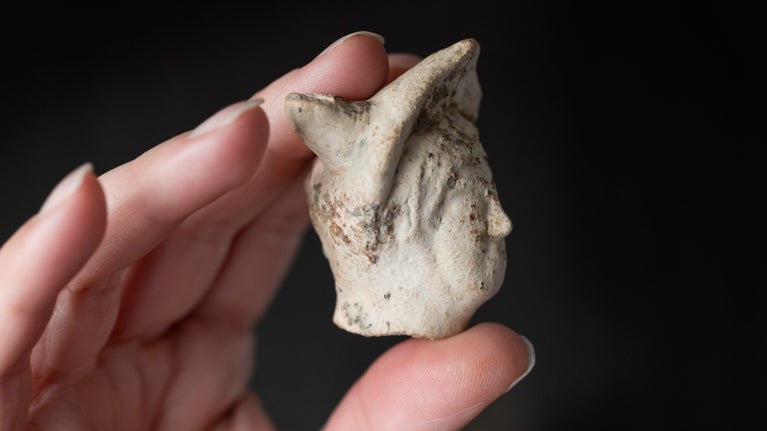
Objects uncovered at archaeological digs can help us piece together an understanding of what life was like in the past. There have been many important finds recorded at the places we look after.
The most significant discoveries are studied and kept safely in museums. These include objects such as an Anglo-Saxon helmet and ceremonial bucket found at the Sutton Hoo burial site in Suffolk. Other artefacts can still be seen at the places we look after.
Here are five intriguing artefacts discovered at the places in our care and the stories they reveal.
Archaeologists discovered evidence of Roman activity during a three-year excavation of a former Medieval shipyard at Smallhythe Place, Kent. The finds included a head from a Roman pipeclay figure of the god Mercury.
Mercury, god of the fine arts, commerce and financial success, is wearing a winged headdress. Pipeclay figurines were made from clays found in areas of modern-day France and Germany, then imported into the country. Most of those found in Britain are of female deities, usually Venus. This figure appears to have been deliberately broken, potentially as part of a ritual process. It's on display at Smallhythe.
Archaeological discoveries can come from within historic buildings as well as outdoors. These papercuts, discovered under floorboards at Sutton House in London, are a rare example of the 17th-century practice of cutting out and colouring.
The activity was used as an educational tool for young girls and Sutton House once housed a girls’ school. For a time, it was fashionable to carefully cut out images from pre-printed sheets of designs, which were often grouped into categories – for example birds, animals or biblical scenes. They were then used to decorate boxes and other items.
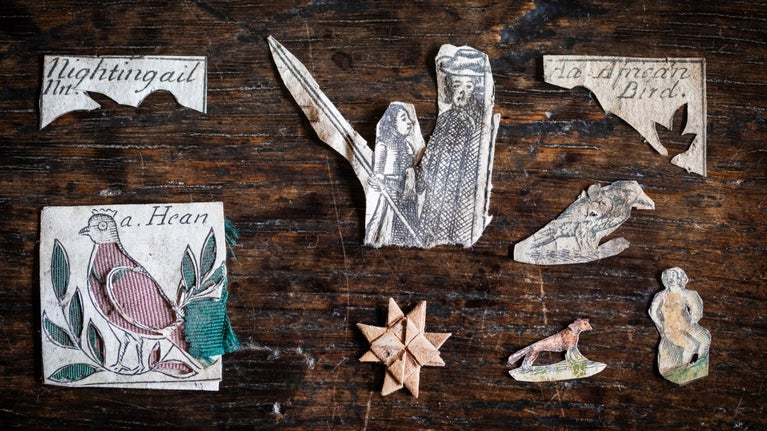
This 5cm-tall bronze figurine was uncovered in 2018 during the construction of the visitor centre on the Wimpole Estate, Cambridgeshire. It was crafted in early Roman Britain and may be a depiction of the Celtic fertility god Cernunnos, holding a torc and a ceremonial spatula.
The figure has a small opening on the bottom indicating that it would have been placed on the end of a spatula connecting to medicine or mixing wax for writing. The 2,000-year-old figurine offers a rare glimpse of style in ancient Britain. It's held at Cambridge's Museum of Archaeology and Anthropology.
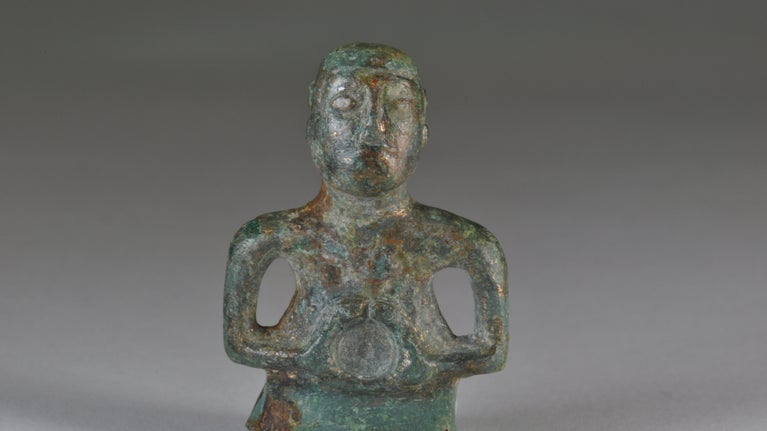
A fragment of patterned Roman glass was found at Chedworth Roman Villa, Gloucester, during an excavation in 2017. Chedworth is one of the finest and largest examples of a Roman villa in Britain. By AD 370, it had become a place of luxury, with rich decoration and fine mosaics. The fragment is on display.
The glass is believed to have been imported from the Black Sea and is part of the tail of a fish-shaped bottle. The bottle may have contained perfume or ointment, with the fish’s mouth forming the bottle opening. Its journey from the far regions of the Roman Empire to a villa in rural Gloucestershire,1,800 years ago, is a reminder that there is still much to learn about Roman life in Britain.
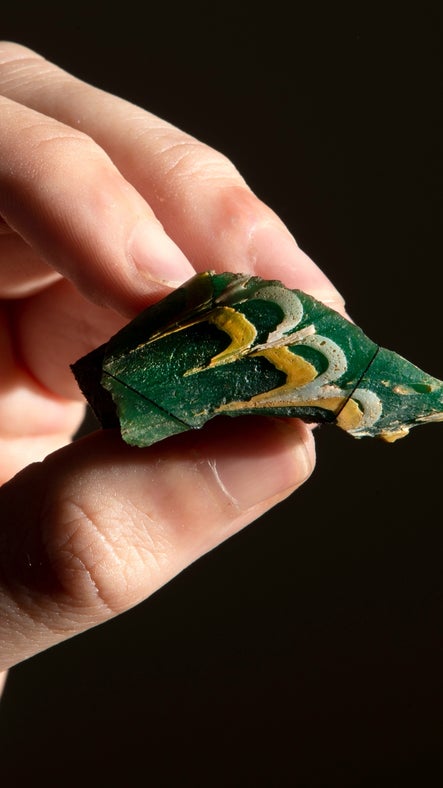
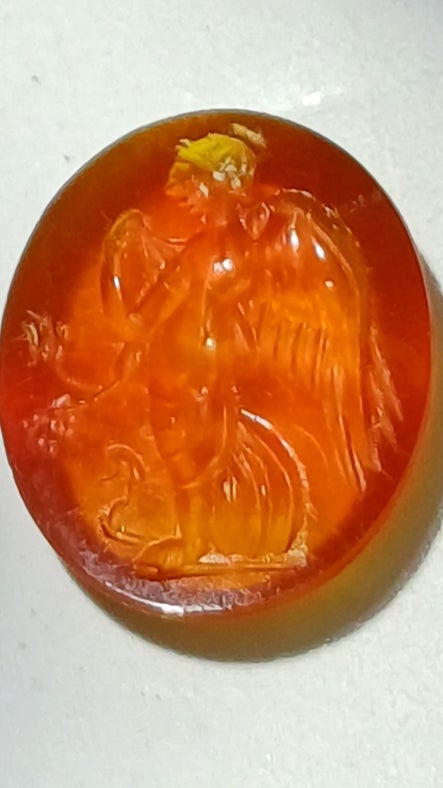
This beautiful intaglio (engraved figure) is made from semi-precious red carnelian stone from the first century AD. It was discovered during a 1989 excavation at Pumsaint Roman Fort, near the Dolaucothi Gold Mines in Carmarthenshire.
The red stone has been delicately carved to show the figure of Nemesis, the goddess of balance, justice and retribution. The stone would have been set in a finger ring, with its primary use being for wax sealing. A fairly common object in the Roman world, intaglio rings were used by all classes of society. However, they're still relatively rare to find in archaeological excavations in the UK.

We look after many rich and diverse archaeological sites. Archaeology helps us to learn more about them and protect them for the future.
From hillforts to stone circles, gold mines and medieval castles, there's plenty to explore at the historic places in our care. Discover reminders of the past that tell the stories of our ancestors.

Historical graffiti offers a valuable window into the past. From the symbols carved into castle walls to the etchings of Isaac Newton, discover the meanings behind the graffiti at the places in our care.

The National Trust cares for many unique and historic landscapes across the UK. Learn more about the type of archaeological remains we look after from the Neolithic to the Bronze Age.
